At the Crossroads of Research, Collaboration, and Implementation Lies the Microbiome
When the announcement for the Human Microbiome Project launched in 2007, Gary D. Wu, MD, saw it as an opportunity to further research he began with Frederic D. Bushman, PhD. Their success when partnered with James D. Lewis, MD, MSCE, for human subject research caught the attention of the University of Pennsylvania and Children’s Hospital of Philadelphia.
“This was an exciting time in the early 2000s when it was newly possible to sequence large amounts of DNA all at once, 454 sequencing methods were brand new at the time,” Bushman said of his entry into the microbiome via HIV research. When Wu approached him to partner on the Human Microbiome Project, he agreed.
Then they both saw the need to involve a researcher like Lewis who worked heavily in translating research into the human patient.
“The link between the microbiome and inflammatory bowel disease had already been proposed and the new technology that became available around that time made this a great opportunity to get involved in the field,” Lewis told Healio Gastroenterology and Liver Disease.
After the first grant from the NIH, the three researchers continued to collaborate.
“Over the years, we assembled a group of investigators working together. We probably had eight investigators on campus and were successful at getting funding,” Wu said.
Concurrently, at CHOP, Robert N. Baldassano, MD, took notice of the microbiome research.
“I actually have Crohn’s disease, hence the interest,” Baldassano told Healio Gastroenterology and Liver Disease. “About 4 years ago, it became obvious that this new technology and new science of the microbiome was going to have a significant impact on our understanding and hopefully relieving the suffering of patients with inflammatory bowel disease.”


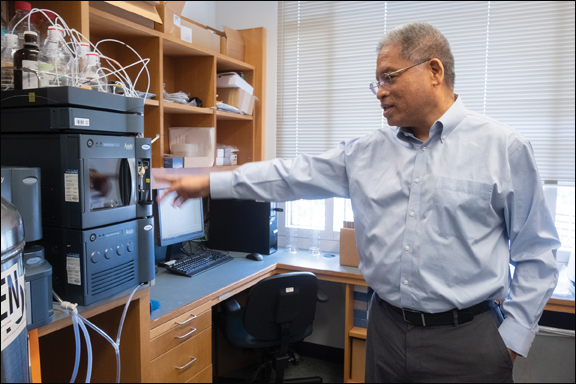
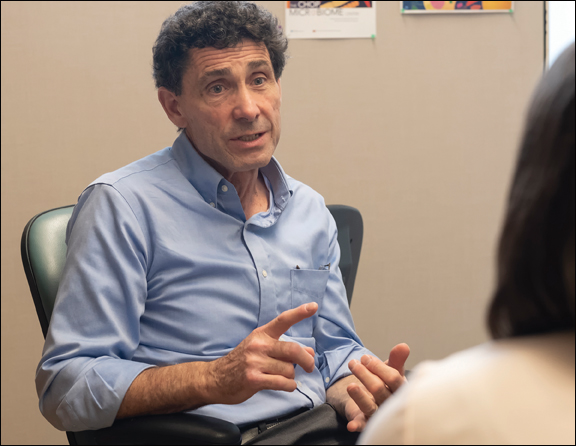
Baldassano approached leadership at CHOP with the idea that while much of the microbiome research pointed to the impact in the first years of life, there were no pediatric microbiome centers in the United States.
With the groundwork at Penn and the need from CHOP, a $9 million co-investment followed in 2015 and Wu, Bushman, and Lewis were joined by Baldassano. They now lead the core areas of the PennCHOP Microbiome Program: the Microbial Culture and Metabolomics core; the CHOP Microbiome Center Sequencing and Analytical Resource; the Microbiome Human Intervention core and Acute Care Biobanking core.
“These cores make the technology needed to do this research much more accessible. Anybody on campus could get their samples sequenced and look at the composition of microbes. They could come and culture microbes. We have a germ-free animal facility. We have a human intervention core,” Wu said.
Baldassano added, “My step into this was IBD, but since then we have had 90 collaborators around the PennCHOP Program or even outside academic and industry partners. It’s a lot more than IBD.”
Wu added that the PennCHOP Microbiome Program is now a focus for the two institutions.
“It’s actually held up as an example of how we can collaborate between Children’s Hospital of Philadelphia and the University of Pennsylvania,” he said.
Unique Collaboration
This collaboration is not only an example within the institution, but sets it apart from other microbiome centers.
“We are probably one of the few, if not the only one, that’s really completely integrated between a children’s hospital and an adult facility,” Wu said. “We have projects in human subjects from preterm birth through infancy, childhood, adolescence, adults, all the way to the elderly at the VA hospital. We span the entire spectrum of age.”
The basis of the patient population at CHOP was also a key point for pushing forward the research as a whole.


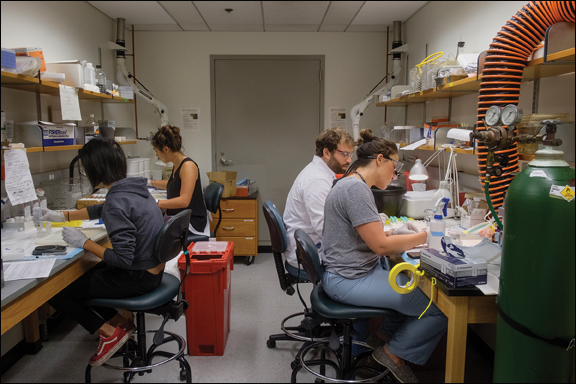
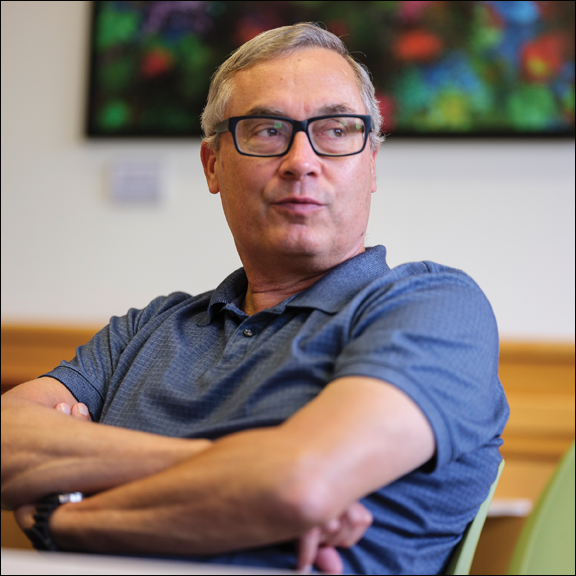
“What’s unique about CHOP is that we have many patients with illnesses, unfortunately, but we also have a very large group of pediatric practices that are part of the CHOP Care Network,” Baldassano said. “We have the availability of not only disease specimens, but we also have the availability of healthy specimens and that’s unique.”
Additionally, Wu explained that the human intervention core is unique to the PennCHOP Microbiome Center.
“We are one of the few that actually has a core facility that does human subject research,” he said. “We have over 14 human subject studies, all funded and ongoing.”
“From the beginning, it was clear that microbiome research would require multidisciplinary teams. The PennCHOP Microbiome Program was designed to bring together a group of scientists with diverse skills. For example, we have microbiologists, mucosal biologists, bioinformaticians, biostatisticians, dietitians, and human subject investigators like myself,” Lewis said.
Lewis works with groups throughout the university setting to assist in their microbiome research.
“Our core has two principle roles. One is to provide consulting services to investigators who are new to the field. In this way, we are able to help jumpstart their work by providing advice while the study is in the planning phase and then providing standard operating procedures to help with the implementation. We also have a number of ongoing projects directly testing various hypotheses related to human physiology, inflammatory bowel disease and the gut microbiome,” Lewis said.
Dietary Intervention
This focus on the human research stems from that first grant application submitted by Wu, Lewis and Bushman in which they focused on how diet impacts the microbiome.
“Our very first submission to the Human Microbiome Project was on diet and we were the only ones,” Wu said. “We got feedback from some of those first reviewers that said this isn’t relevant. ... It was the third paper we published in Science and is now cited more than 2,800 times.”
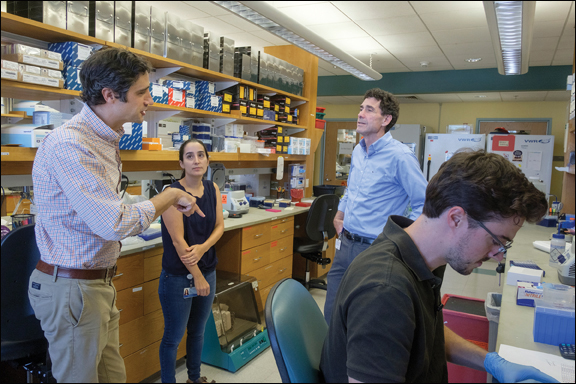
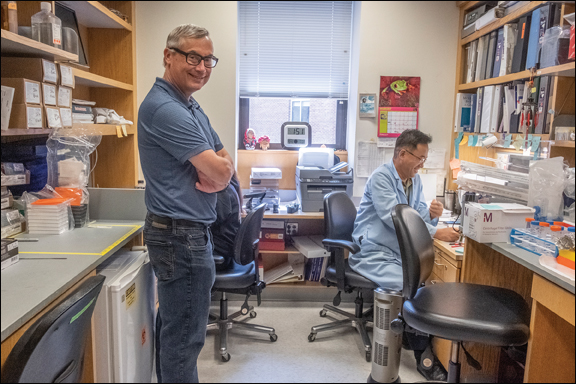
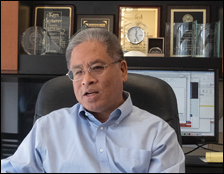
Wu explained that this is where they lead the charge in microbiome research. Currently, the two studies of interest are FARMM (Food and the Resulting Microbial Metabolites) and FRESH.
FARMM is an intensive 2-week in-patient study that will look at the circulating metabolites with a vegan diet, western style omnivore diet and a specific enteral nutrition meal replacement formula used to treat Crohn’s disease. Using metabolomic small molecule discovery, rectal biopsies performed with flexible sigmoidoscopies and immune profiling, the program is looking at response in the mucosal immune system.
“The number one thing that people want to know when they have inflammatory bowel disease is what diet they should be on,” Wu said.
“We know that extreme dietary modification using meal replacement beverages rather than table food can be effective for patients with Crohn’s disease, but we do not understand why this change in diet works,” Lewis added. “If we are able to solve the mystery of how this dietary intervention is working, we may be able to design diets composed of regular table food that have a similar degree of efficacy. That could be a game changer for patients with inflammatory bowel disease.”
Wu asked, “Is it that these diets provide something that we don’t get in normal food? Or, very interestingly, are they excluding something bad?”

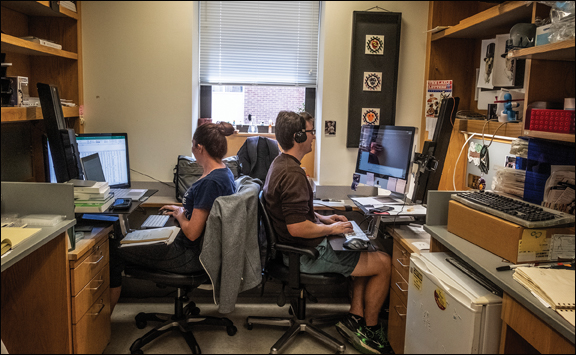
FRESH is looking at dietary emulsifiers, he said. Knowing that as an area becomes industrialized and the diet of its people fundamentally changes, Wu and the team would like to know if those changes are linked to the drastic rise in inflammatory diseases at the same time. This in-patient, 2-week study will look at the human response to dietary emulsifiers and compare that with the established mouse outcomes of metabolic syndrome and obesity. In the mouse model, there have been biomarkers identified and linked to the disease state.
“If we can reproduce any of those biomarkers then that gives us biomarkers that we can do bigger studies in outpatients to quantify people taking dietary emulsifiers,” Wu said.
“We are very fortunate because we can do these interventions that don’t require the pharmaceutical industry to be involved,” he said. “We can change people’s diets. We can use antibiotics, probiotics, prebiotics. These are interventions we can do ourselves.”
Microbiome-Therapy Interaction
Looking at the microbiome-diet interaction also brought to light the idea that if a disease can be treated via diet, therapies and antibiotics may affect or be affected by the microbiome.
“Your microbiome might determine what therapies you respond to. Your microbiome might be dependent on your diet. So, we are showing that certain dietary interventions can change your microbiome, which might change how you respond to antibiotics,” Baldassano said.
In the analytics core, they are looking for those predictors in IBD and elsewhere.

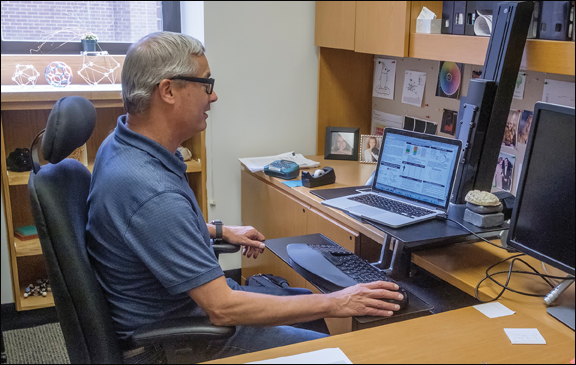
“One of the things important to the clinical side but also fascinating from the basic science side is the development of microbial communities after antibiotic use and also how a person starts out at birth with very few or no bacteria,” Kyle Bittinger, PhD, said. “We are looking at people with IBD who have been through antibiotic use. We’ve depleted a lot of bacteria in those people. When the community comes back, how does it develop back into a full diverse community of bacteria? What are the rules we can learn about how that happens? Likewise, in infants, there are similarities in the process.”
Baldassano added, “By understanding this, hopefully it helps us treat people. With IBD, how do we repopulate them with a healthy environment rather than one that seems to perpetuate disease?”
Living with Crohn’s disease, Baldassano has hope that this is the next step in treatment.
“It would be great to say: ‘I looked at your microbiome. You could take this medicine and you’ll get better,’” he said. “The microbiome is really going to help us personalize medicine.”
Impacting the Patient
The leaders of this PennCHOP Microbiome Program all have an eye to the future and some end goals in mind.
“At the end of the day, the relevance to human biology is not crystal-clear right now. That’s one of the things that our program emphasizes,” Wu said. “You would think a lot of patients care about the biggest next discovery, but what I find when I talk to patients and their families, they appreciate the fact that we’re working this hard. For them, it’s holding out this hope that we’re going to come up with something that will improve their lives.”
Bushman, coming from his HIV background, looks toward treatments.
“I’m excited about building tools that lots of people want to use. ... I’m excited about some of the things we’ve learned about disease states that might allow you to better treat those diseases. I’m just excited about the natural history side of things and just seeing so much of the world that you couldn’t really see before, but you now see is really there,” Bushman said.
These small, but powerful impacts are important to keep in mind, Wu said.
“My goal in my career is to be able to point to something I did or some research that I did that actually touches a patient at some point in a practical way,” Wu said. “As a physician scientist – someone who treats patients – that’s very meaningful to me. Because the microbiome is an area where we can do human subject research, this is the closest I’ve gotten. I don’t know if we will get there, but that’s what I aspire to do.”

For Baldassano, it can be more personal.
“I’ve been playing this game for a while. I’ve had this disease for 40 years. About 15 to 20 years ago, we did the genetic trials here. ... We realized there were certain genes that were triggers for this disease. We thought back then once we had the genetics that we were going to have a cure for the disease. We didn’t,” he said. “What we were not thinking about was environment. And what’s the biggest environmental exposure? It’s the organisms that live within us. I do believe this was the missing piece to the puzzle of us making a difference to the people suffering with this disease. The genetics will be important, but the microbiome will also be important because we can change the microbiome to help treat the diseases. Or, better yet, take action in the first years of life so we don’t get these diseases.”
In the case of the leaders of the PennCHOP Microbiome Program, the collaboration is an additional achievement.
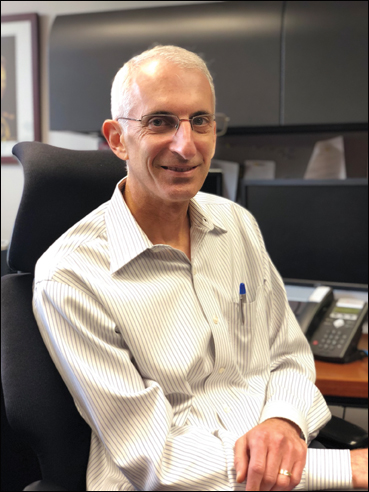
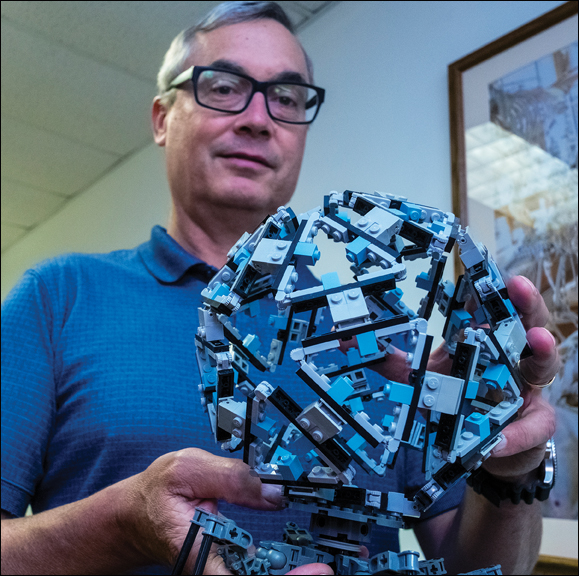
“You cannot do it all by yourself. Modern-day translational research requires collaborations among people with different expertise. If you are interested in this kind of research, figure out what your expertise is and then start by looking for great collaborators with expertise in other domains,” Lewis said.
“Everyone can play a role in this discovery. ... Clinicians have the ideas because they’re treating the patients. The clinicians also have the availability of the biosamples. The best scientists in the world wouldn’t be able to go anywhere if we didn’t have people with ideas giving us the biosamples,” Baldassano said. “That’s a role for the gastroenterologist: What are the questions? What are the problems?” – by Katrina Altersitz
- For more information:
- The PennCHOP Microbiome Program team can be reached at https://www.med.upenn.edu/penn-chop-microbiome/.
